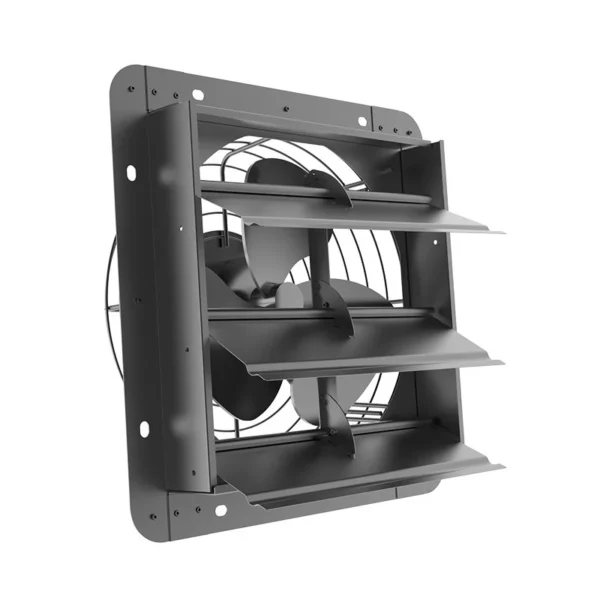
The Ultimate Guide to Ventilation Exhaust Fans: Types, Benefits & Buying Tips
Introduction
A ventilation exhaust fan is an essential component for maintaining healthy indoor air quality in homes, offices, and industrial spaces. These fans remove stale air, excess moisture, odors, and pollutants, preventing mold growth and improving comfort.
In this guide, we’ll explore the different types of ventilation exhaust fans, their benefits, key selection factors, installation tips, and maintenance best practices—helping you choose the best model for your needs.
Why You Need a Ventilation Exhaust Fan
Proper ventilation is crucial for:
✔ Reducing humidity – Prevents mold and mildew in bathrooms and kitchens
✔ Eliminating odors – Removes cooking smells, smoke, and stale air
✔ Improving air quality – Reduces allergens, VOCs, and airborne pollutants
✔ Enhancing energy efficiency – Modern fans consume less power while performing better
✔ Preventing structural damage – Excess moisture can warp wood and damage walls
Without proper ventilation, indoor air can become 2-5 times more polluted than outdoor air (EPA). A high-quality ventilation exhaust fan solves these issues effectively.
Types of Ventilation Exhaust Fans
1. Ceiling-Mounted Exhaust Fans
Best for bathrooms and kitchens
Discreet installation with ductwork leading outside
Options include basic, humidity-sensing, and energy-efficient models
2. Wall-Mounted Exhaust Fans
Ideal for garages, workshops, and commercial spaces
Directly expels air outside without ductwork
Higher CFM (cubic feet per minute) for stronger airflow
3. Inline Exhaust Fans
Installed inside ductwork (great for tight spaces)
Extremely quiet operation
Used in bathrooms, laundry rooms, and HVAC systems
4. Window Exhaust Fans
Simple DIY installation
Perfect for apartments and small kitchens
Affordable but less powerful than built-in models
5. Energy Recovery Ventilators (ERVs)
Advanced systems that exchange stale air with fresh air while retaining heat/cooling
Best for homes with tight insulation
How to Choose the Right Ventilation Exhaust Fan
1. Calculate the Required CFM
Bathrooms: 1 CFM per square foot (minimum 50 CFM)
Kitchens: 100 CFM minimum (up to 400 CFM for heavy cooking)
Laundry Rooms: 50–100 CFM
2. Consider Noise Levels (Sones Rating)
0.3–1.0 sones = Very quiet (ideal for bedrooms & bathrooms)
1.0–4.0 sones = Moderate noise (kitchens, garages)
4.0+ sones = Loud (industrial use)
3. Energy Efficiency (Look for ENERGY STAR® Certification)
Saves up to 60% on electricity
Smart fans with auto shut-off & humidity sensors optimize performance
4. Ducting Requirements
Short, straight ducts improve airflow efficiency
Avoid sharp bends and long duct runs (reduces CFM)
5. Extra Features
Humidity sensors (auto-on when moisture is high)
Motion sensors (activates when someone enters)
LED lighting (dual-purpose bathroom fans)
Installation & Maintenance Tips
Professional Installation vs. DIY
Simple replacements (same size/model) can be DIY
New installations (cutting walls/ceilings) may require an electrician
Maintenance Checklist
✅ Monthly: Clean the grill & fan blades
✅ Every 6 months: Check ducts for blockages
✅ Annually: Lubricate motor bearings (if applicable)
FAQs About Ventilation Exhaust Fans
Q: How long should I run my exhaust fan?
A: At least 20 minutes after showering (for bathrooms) or during and 15 minutes after cooking (for kitchens).
Q: Can an exhaust fan replace an air purifier?
A: No—exhaust fans remove air, while purifiers filter it. Use both for best results.
Q: Why is my exhaust fan noisy?
A: Dirty blades, loose parts, or an aging motor may cause noise. Clean or replace if necessary.
Q: Should I get a fan with a humidity sensor?
A: Yes! It automatically turns on/off based on moisture levels, improving efficiency.
Final Thoughts
Choosing the right ventilation exhaust fan depends on room size, airflow needs, noise tolerance, and energy efficiency. Whether you need a simple bathroom fan or a heavy-duty industrial exhaust system, this guide helps you make an informed decision.
Ready to upgrade? Check out our recommended best ventilation exhaust fans for 2025!

